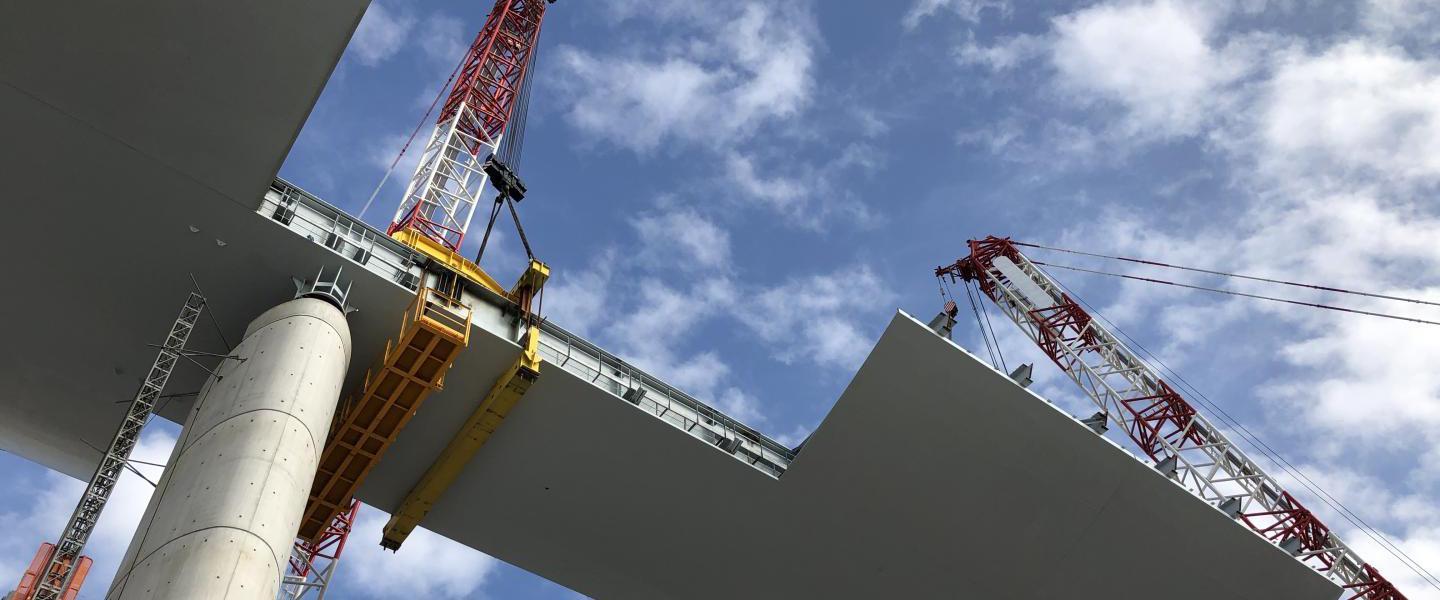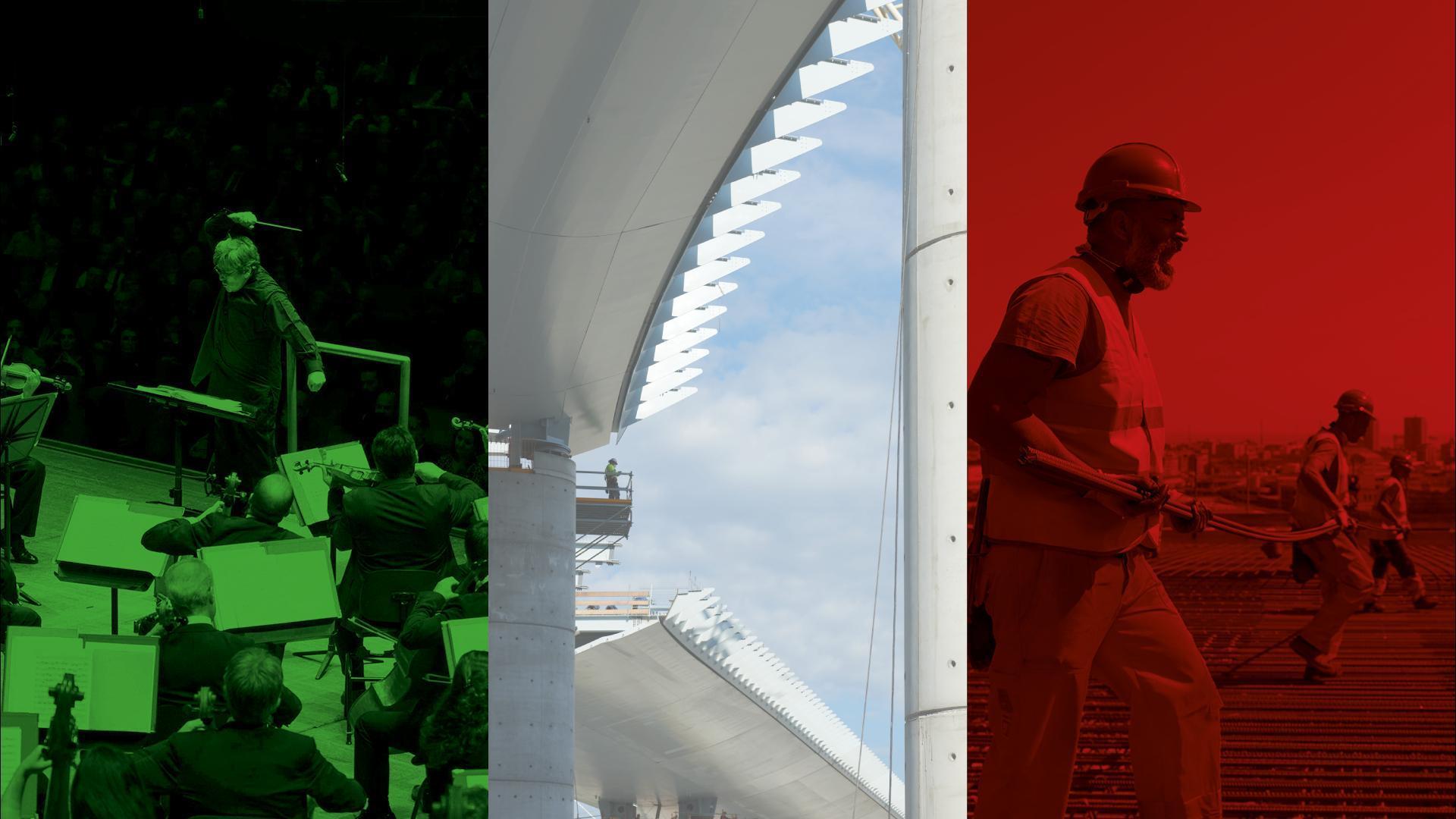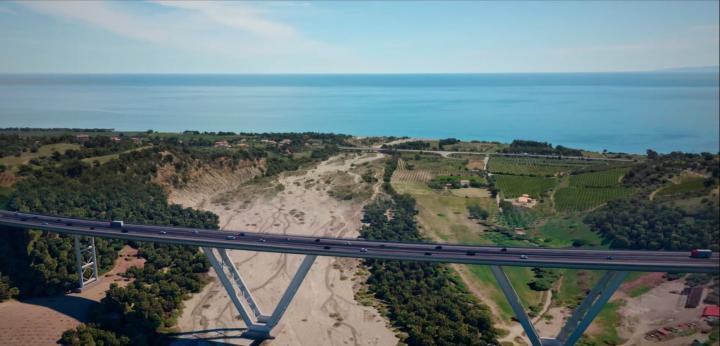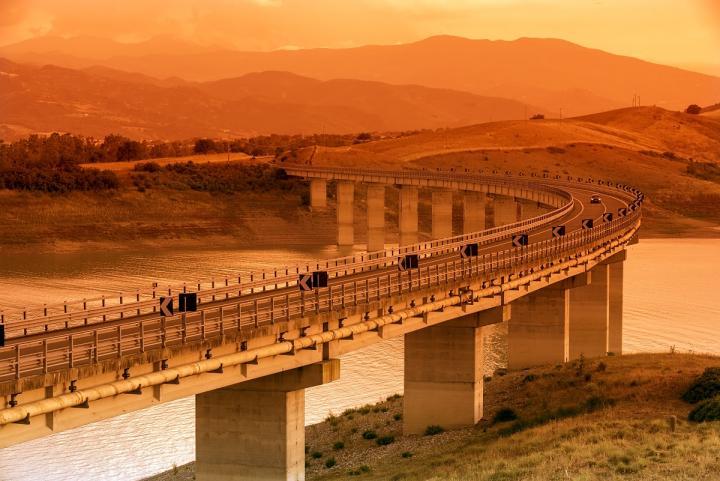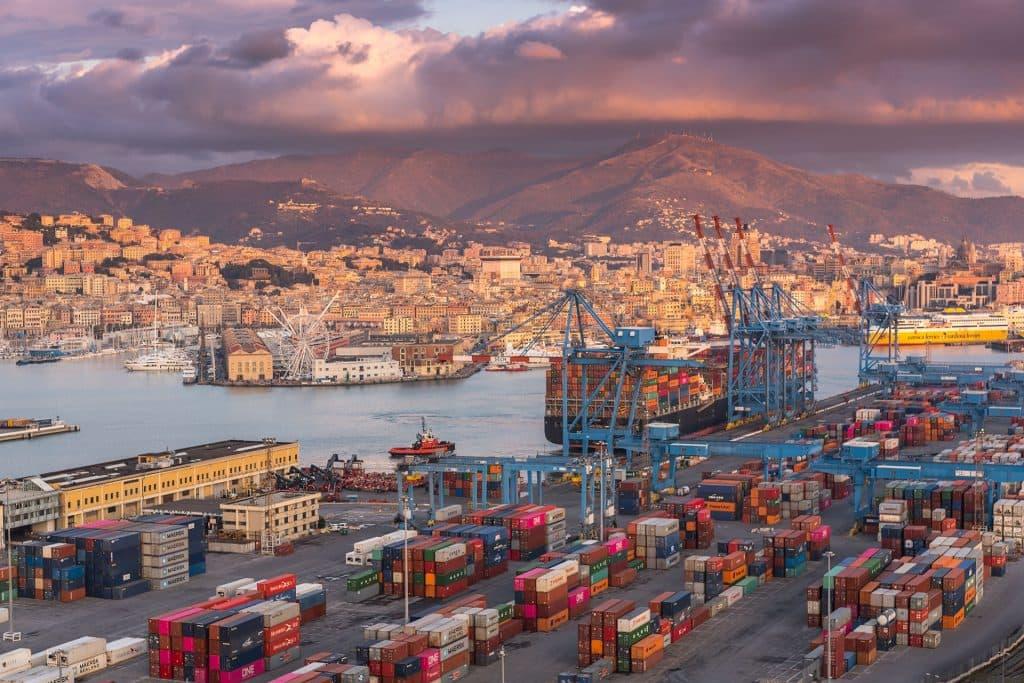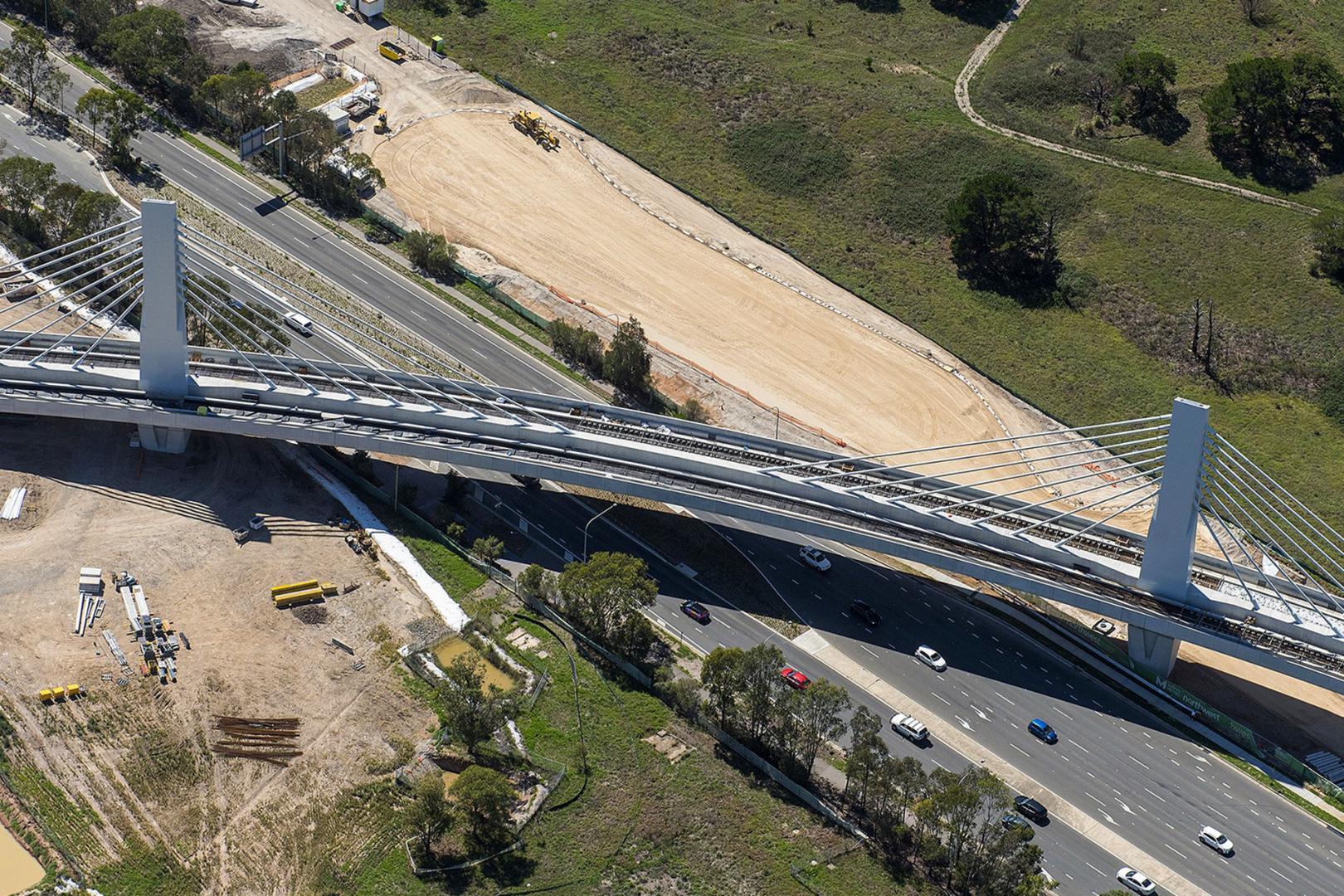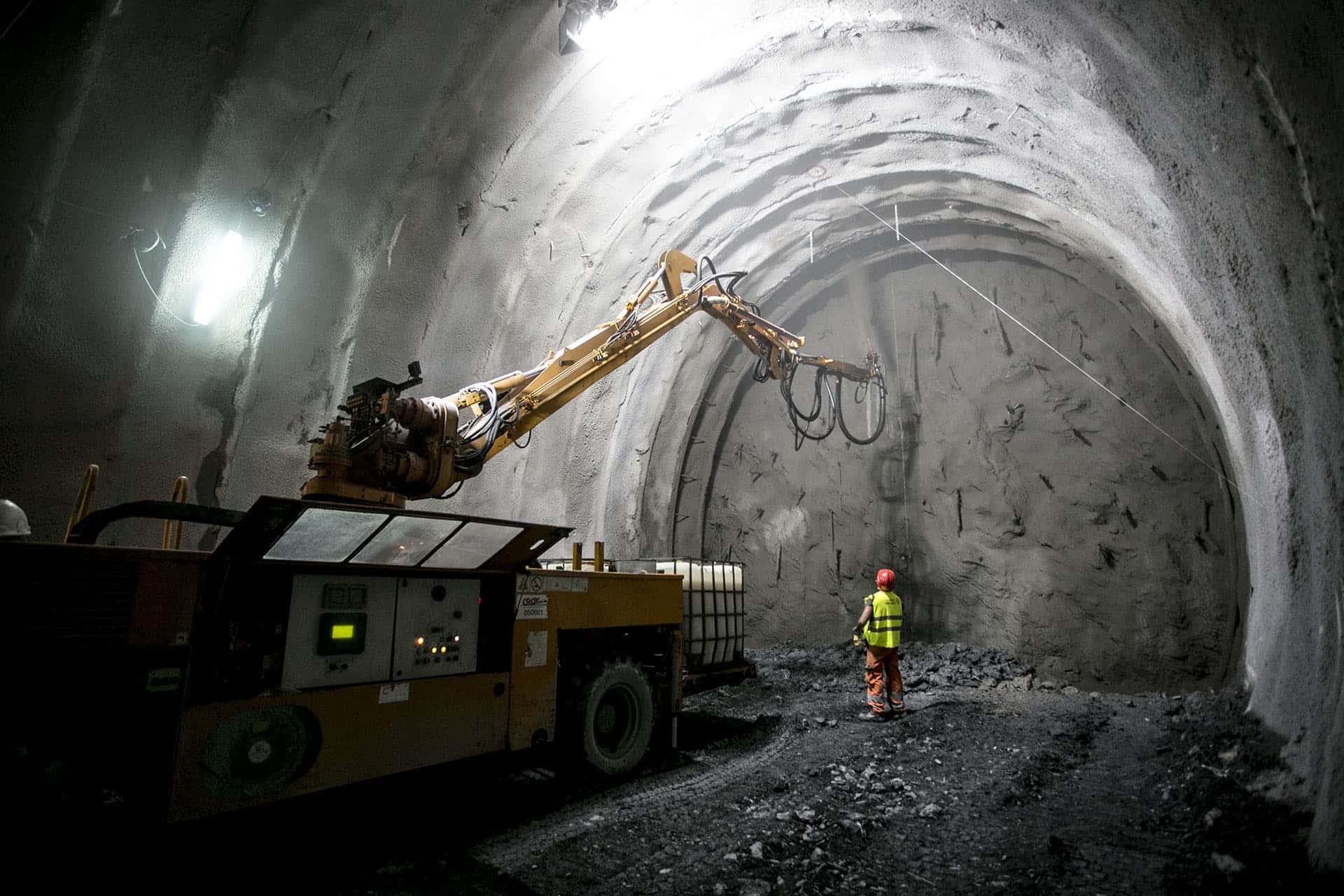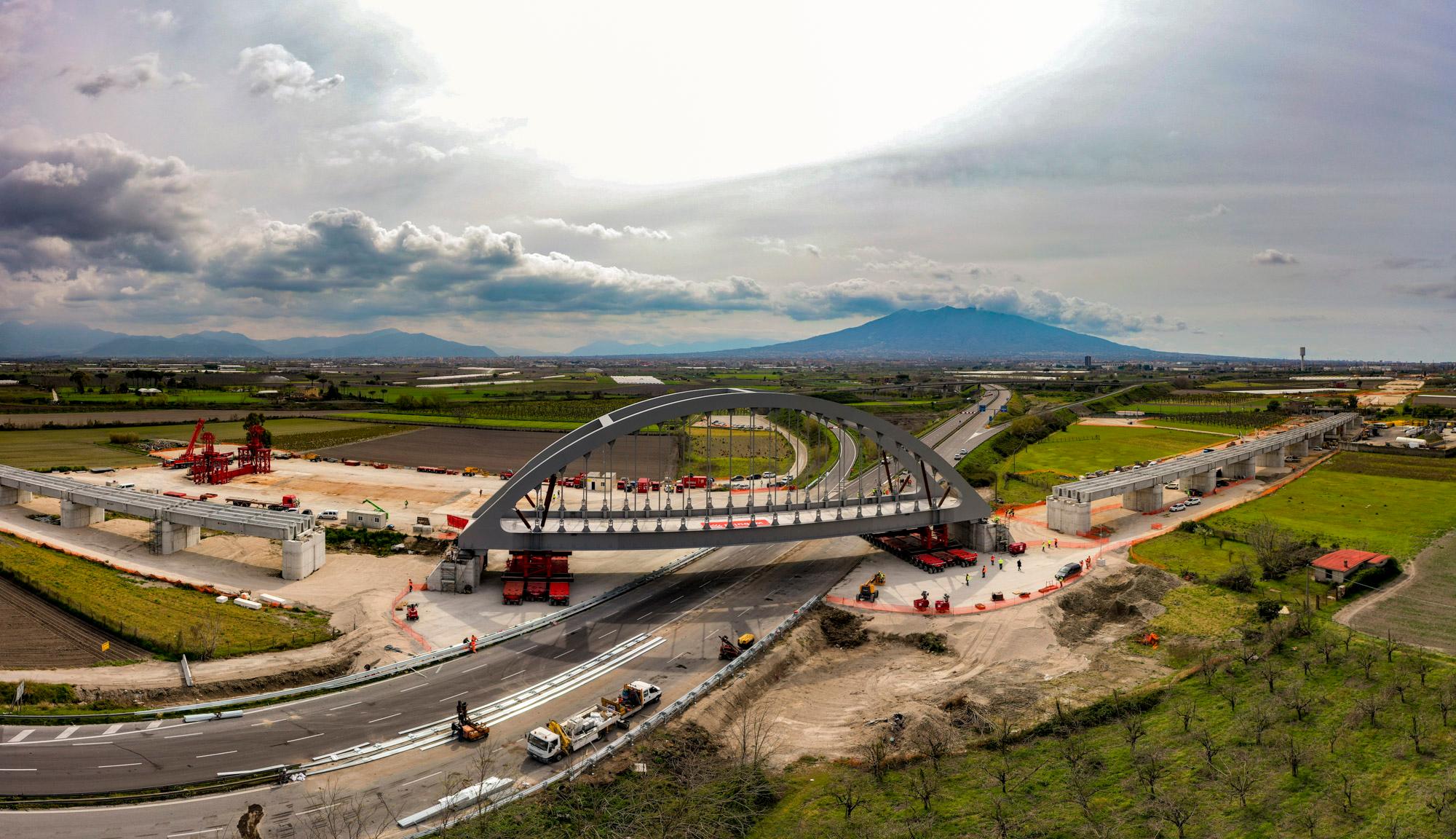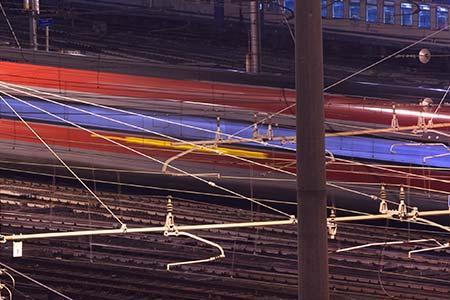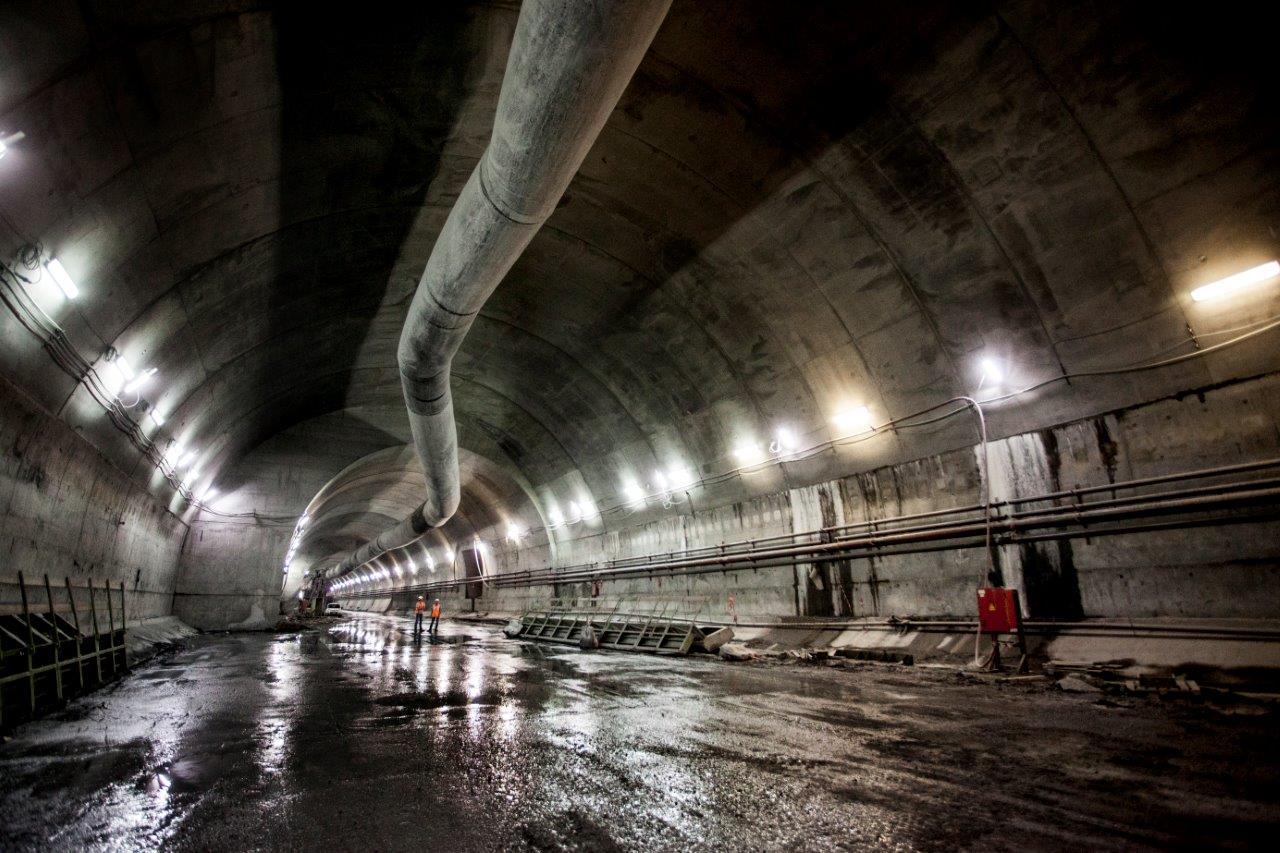Building tomorrow
Investing in infrastructure

On August 4, 2020, reopened to traffic, two years after the Morandi bridge collapsed, and fifteen months after reconstruction works began. And, above all, two months after the long lockdown period, which became mandatory to face the Covid-19 epidemic crisis. It has, therefore, taken on an enormous symbolic value: An example of how infrastructure can be used to revive the economy of hosting states, currently facing a full recession due to the slowdown of commercial and economic activities.

The new Genoa bridge "San Giorgio" under the rainbow, minutes after the opening ceremony, August the 3rd 2020.
Infrastructure development, and renewed maintenance plans for the existing infrastructure, have become fundamental pillars of strategies for restarting and relaunching national economies, crushed by an economic crisis greater than the 1929 one or the years immediately following the Second World War.
In the short term, infrastructural investments create new jobs, moving the economy both directly and indirectly. In the long term, they also increase the competitiveness of the "country system", improving and speeding up the movement of both goods and people, both inside and outside national borders, while also promoting Import - Export activities.
Infrastructure investments are anti-cyclical. Public investments in infrastructure immediately restart the economy, generating real cash flow for workers and their families, when consumption is reduced due to a climate of uncertainty and fear, and a consequent trade flow contraction.
Once completed, new infrastructure will particularly facilitate other production processes, becoming a platform where resumed commercial exchanges can occur more easily and quickly. Infrastructural investments are, therefore, essential, because they can generate a direct and indirect impact on the GDP, with a multiplier effect on invested resources".
The multiplier effect of infrastructure investments
Economists generally believe that spending on infrastructure has a significant "multiplier effect": each unit of money spent on infrastructure generates a higher economic return in terms of increased gross domestic product (GDP) and employment.
Each phase, while building an infrastructure, from planning to designing, from purchasing to actual construction, generates a multiplier effect on the economy.
A very recent conducted by Oxera, for ICE, estimated multipliers of the infrastructure sector to range between 1.5 and 2.7. 1.5 to 2.7 additional units of currency will be generated by the multiplier effect, for each currency unit invested in building infrastructure. The research on infrastructural investment growth multipliers conducted by WIOD/ McKinsey Global Institute (MGI), which considers historical series of infrastructure investments, and subsequent benefits for GDP and jobs, widely cited from the Infrastructure in a report, is even more precise. The research, in fact, defined multipliers capable of estimating the expected growth of GDP and jobs, in terms of infrastructural investment, for the various industrial sectors involved in the project:
Infrastructure and the economy: Country Strategies
The ISPI report, besides underlining the strong anti-cyclical nature of infrastructure investments, also tells us that "in most countries, the reduction of infrastructure investments, compared to national needs, has led to lower GDP growth and lower employment rates. However, in recent years, countries also implemented tax consolidation policies aimed at reducing their deficits, and accumulating debt securities. As a result, an increasing number of private operators entered the infrastructure market, generally collaborating with states or other regional or local public authorities".
"In a context of limited private investments, the major powers are regaining advantage in infrastructural decisions, transforming infrastructure plans into geopolitical tools". China is an example: with infrastructure spending reaching 7% of the GDP (in Europe, today, it has reached 2%, while the US is set on 1%), Beijing has strongly focused on connectivity. "China has first used infrastructure as an engine for internal growth. More recently, as a means of external projection. The Belt & Road Initiative precisely aims at creating a closer economic and strategic interconnection between the country and the Eurasian bloc, through an ambitious infrastructural investment programme, which - from 2013 onwards – created over 600 billion dollars in funding”.
Investments in infrastructure sector in Italy
The Italian Committee for European Affairs presented, at Palazzo Chigi, the , the draft of the investment programme aimed at using the Next Generation EU funds, to send to the European Commission, on October 15, 2020.
The text indicates six action "clusters": digitization and innovation, green revolution and ecological transition, production system competitiveness, infrastructure for mobility, education and training, equity and social and territorial inclusion, and health.
In the in-depth page on the Infrastructure for Mobility cluster, we particularly illustrate the completion of the TEN-T railway corridor, the development of the High Speed / High Capacity network throughout the Italian territory, the development of the road and motorway network and bridges and viaducts, integrated logistic intermodality and, finally, the development of public and private mobility with a sustainable environmental impact.
The Italian government is not the only one looking towards infrastructure to relaunch the country.
The Italian infrastructure sector is also popular abroad. This is what the latest EY report "Infrastructure Barometer", involving 56 company executives, financial institutions and infrastructure funds, internationally, has stated.
44% of respondents plan to invest in the Italian infrastructure sector in the forthcoming 12 months. This confidence derives from consolidating the Italian construction sector ) and from introducing a new code of associated tenders (following the Morandi bridge collapse) to the spreading of the Covid-19 pandemic, which modified and attracted the attention of investors towards the Italian infrastructure sector.
"The Italian infrastructure sector is considered a key market for the main global institutional investors. It attracts because of the existing gap between current infrastructure and needed ones, and due to the greater opportunities, which exist compared to other countries with more mature economies, where a process of consolidation has already existed for years. In such a favourable context, where difficulties arise from political and regulatory uncertainty, but where institutions seem to be working in the right direction, we hope that Italy will be able to fully seize this opportunity ”, said EY Strategy and Transactions partner Andrea Scialpi.
The research, therefore, shows that the Italian infrastructural world is attractive. A "44%" thinks of investing in Italy, next year, with a focus on the infrastructure sector. The quality of this sector is also considered to be in line with the EU average, despite some concerns regarding the following segments:
- transport (for 39% of respondents, under EU average)
- social infrastructure (for 40% of respondents, under EU average)
- PPP (for 46% of respondents, under EU average)
Investors, in addition to the above, are attracted by mature segments like:
- motorways (57%)
- railways (54%)
- renewable sources (75%)
- hospital sector (66%)
Furthermore, 59% of respondents expect to see increased competition for investments in Italian infrastructure, in the forthcoming 12 months. However, to counterbalance the research, there is a negative aspect has always characterized Italy: for 79% of respondents, political and regulatory uncertainty represents the main brake for investments, in Italy.
“Infrastructure investments have a significant multiplier effect. It is estimated that every euro spent multiplies up to 2.5 times its value in terms of GDP. Investments in the sector are, therefore, considered one of the key levers for recovery. However, in Italy, the sector is still partially underdeveloped: infrastructural investments impact the Italian GDP by 2.1% (public investments) and by 5.2% (private ones), compared to the EU average, which is respectively 3% and 7% ”, said EY Strategy and Transactions Managing Partner Marco Daviddi.
